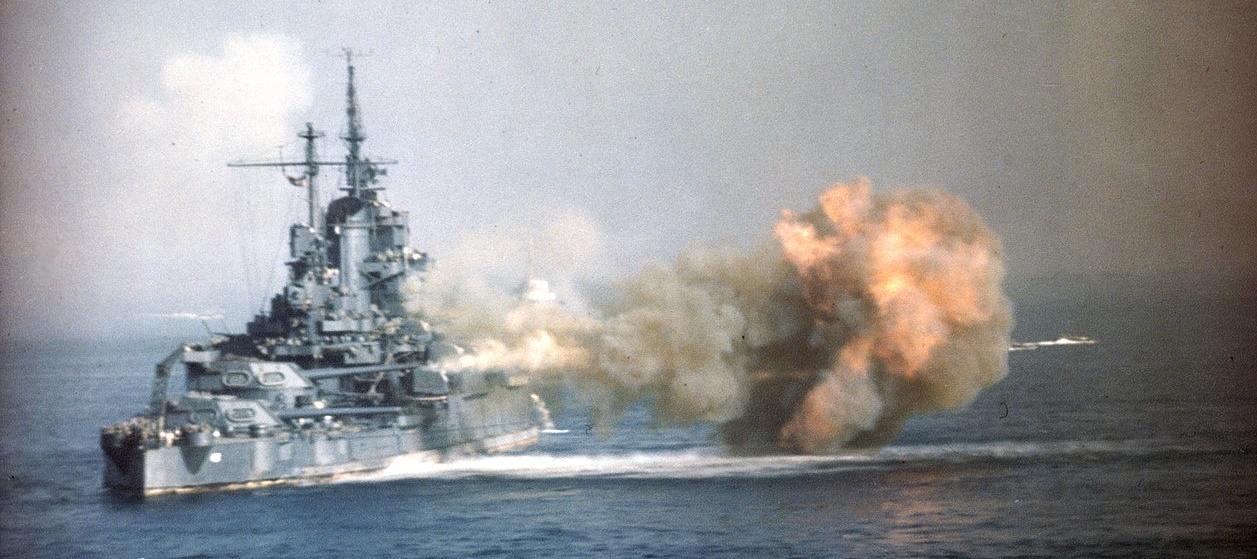The New Mexico class brought two major upgrades to the previous Pennsylvania class. One, the introduction of the 14"/50cal gun in place of the 45cal. Two, the clipper bow to replace the recurved bow of previous classes. The US Navy was getting worried about the size of an enemy that could contain one or more fleets if war was waged against them. This class was to be a class of four and with the second Hawaii class were all ordered in the same fiscal year, approved by Congress. A much expanded fleet would be required, especially when the enemies could divide the fleet to fight a two ocean war.
-NARA-45512536.jpg)
As completed. The lower deck casemates have already been removed, but not yet plated over.
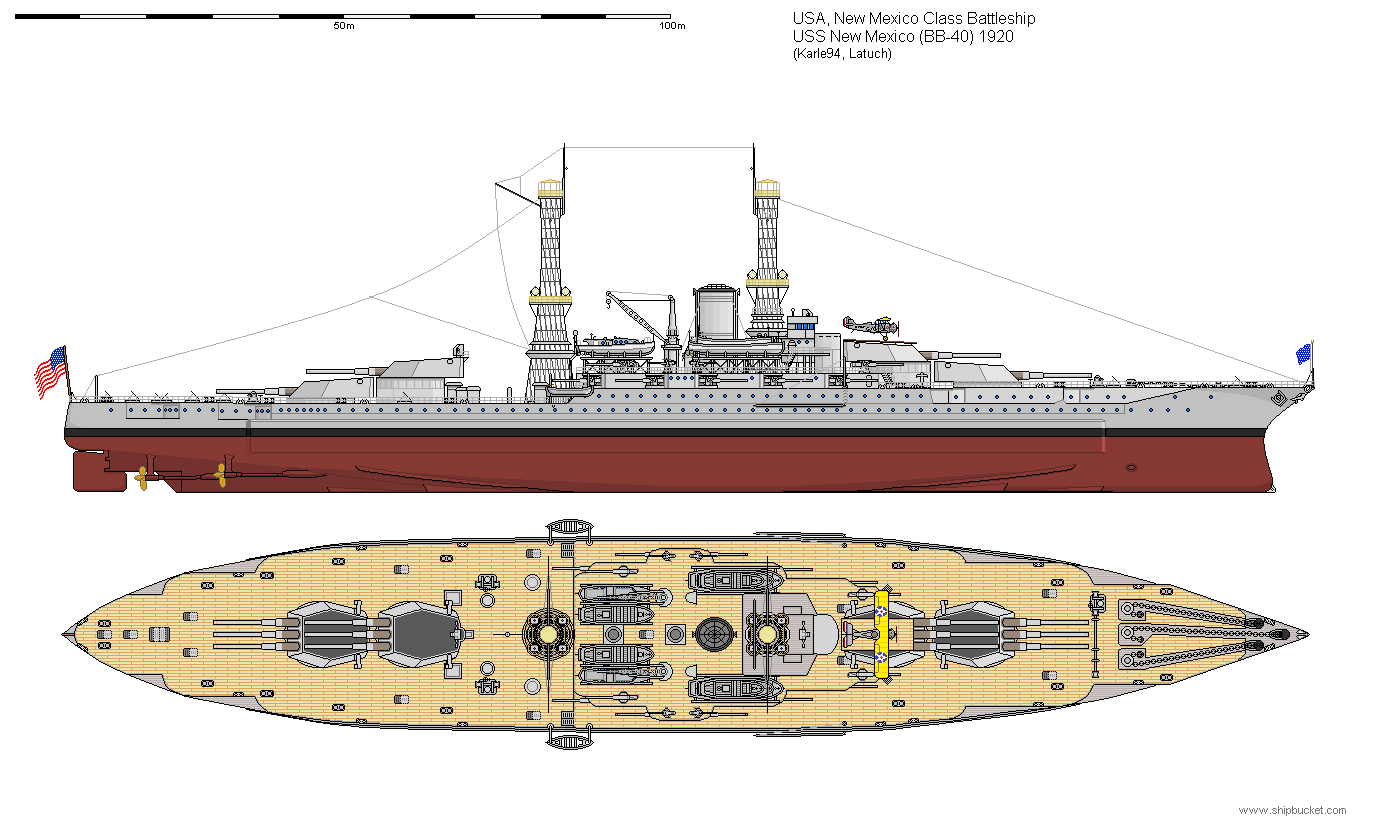
The US 14" Super-Dreadnoughts were powerful ships. Easily a match for the equivalent ships in other navies. The siting of the 5" casemate guns, one deck higher than in most other Dreadnoughts, was a much better layout, receiving less spray interference, allowing the guns to be worked in almost all weathers.
.jpg)
1927 and the aircraft handling facilities have changed from the flying off platform on 'B' turret to a catapult and crane aft.
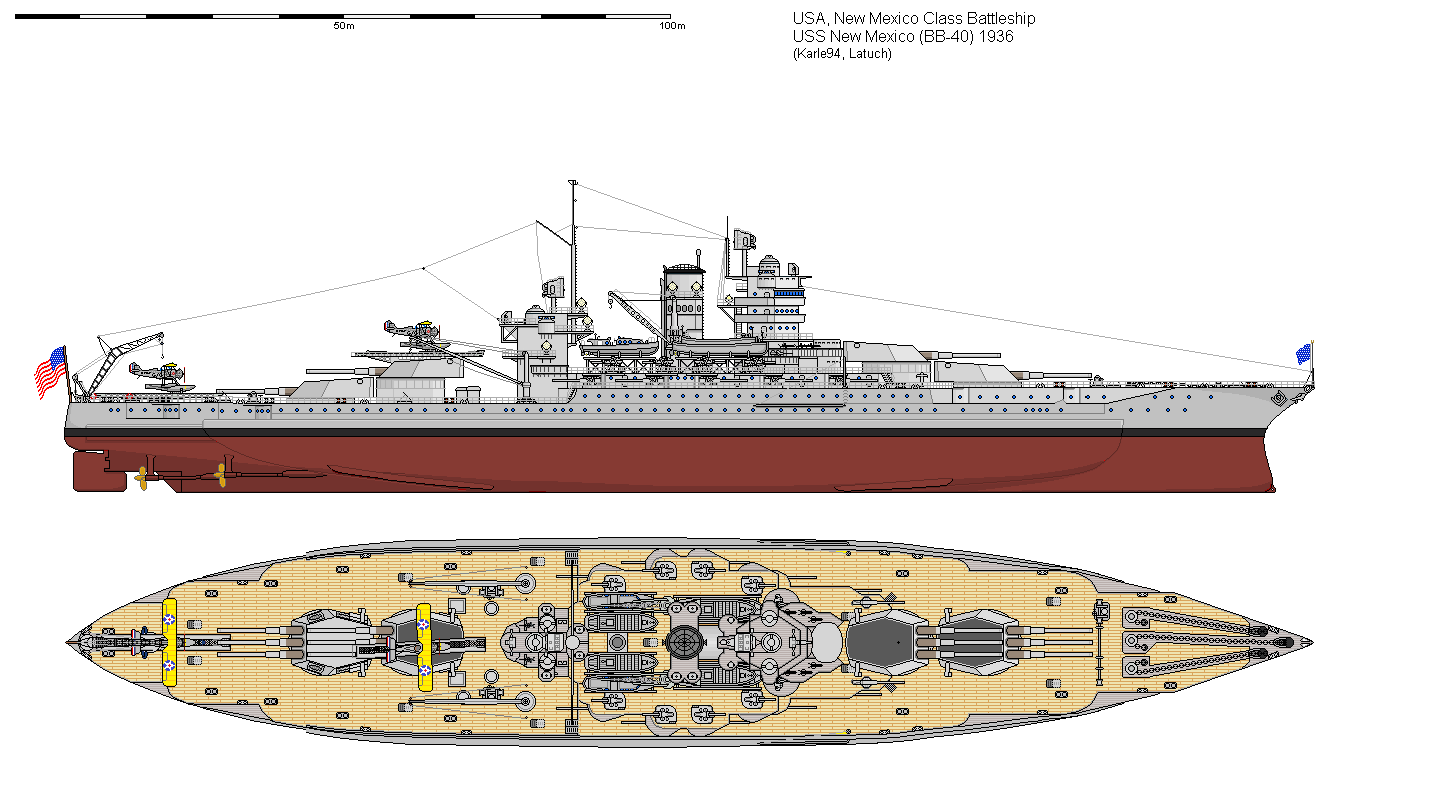
Jump to the New Mexico type up to their 1936 refit schedule, and the modern capital ship can be seen to be emerging. AA directors are mounted forward and aft for the 5"/25cal AA guns. The cage masts are gone, and the bridge superstructure is much enlarged, much like the Royal Navy was doing with its refurbished capital ships. Bulges had been added for anti-torpedo protection.
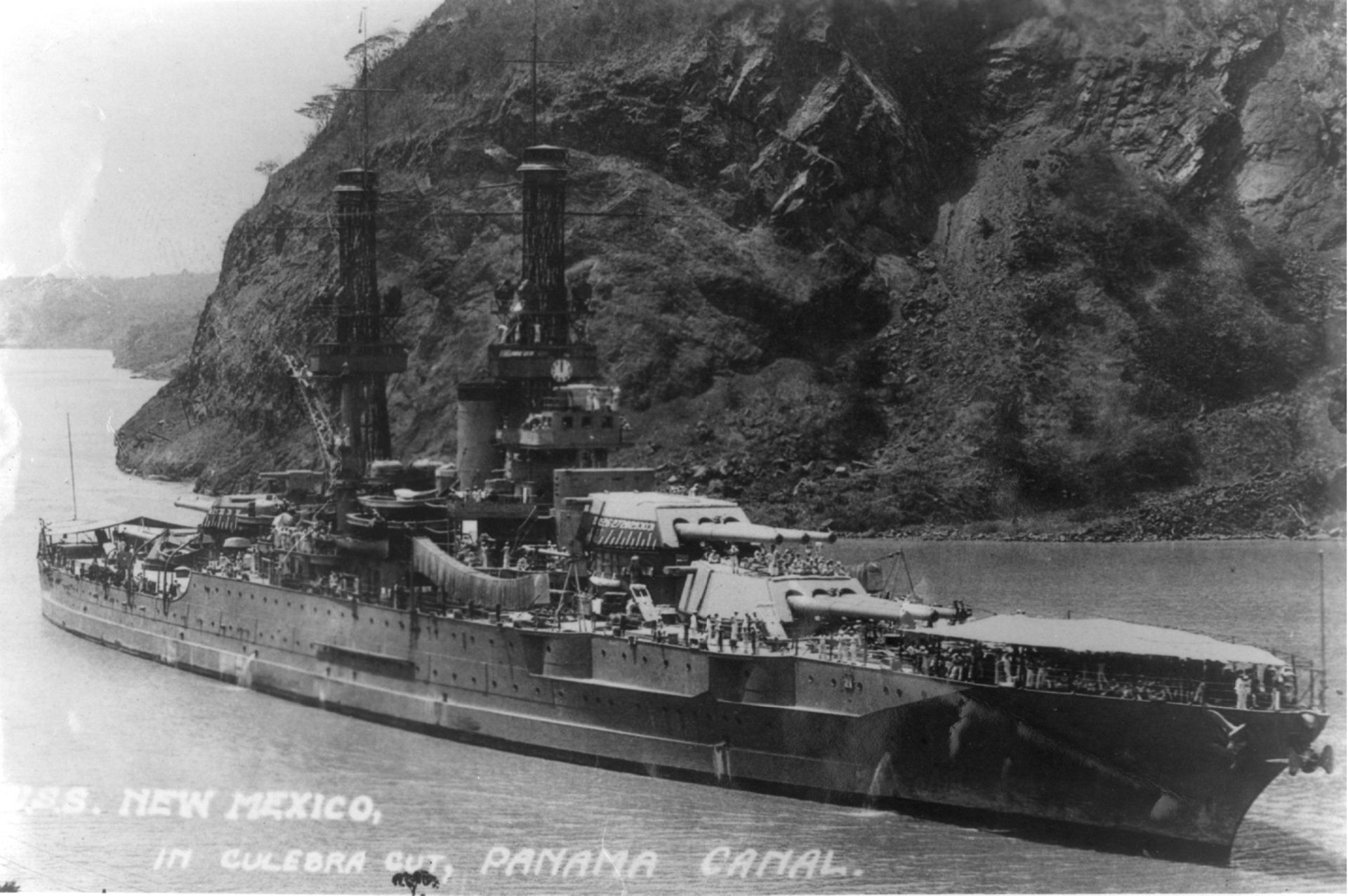
With the completion of the Panama Canal, the US Navy had its easy transfer of ships between the Pacific and Atlantic Fleets. No more "Round the Horn" trips.
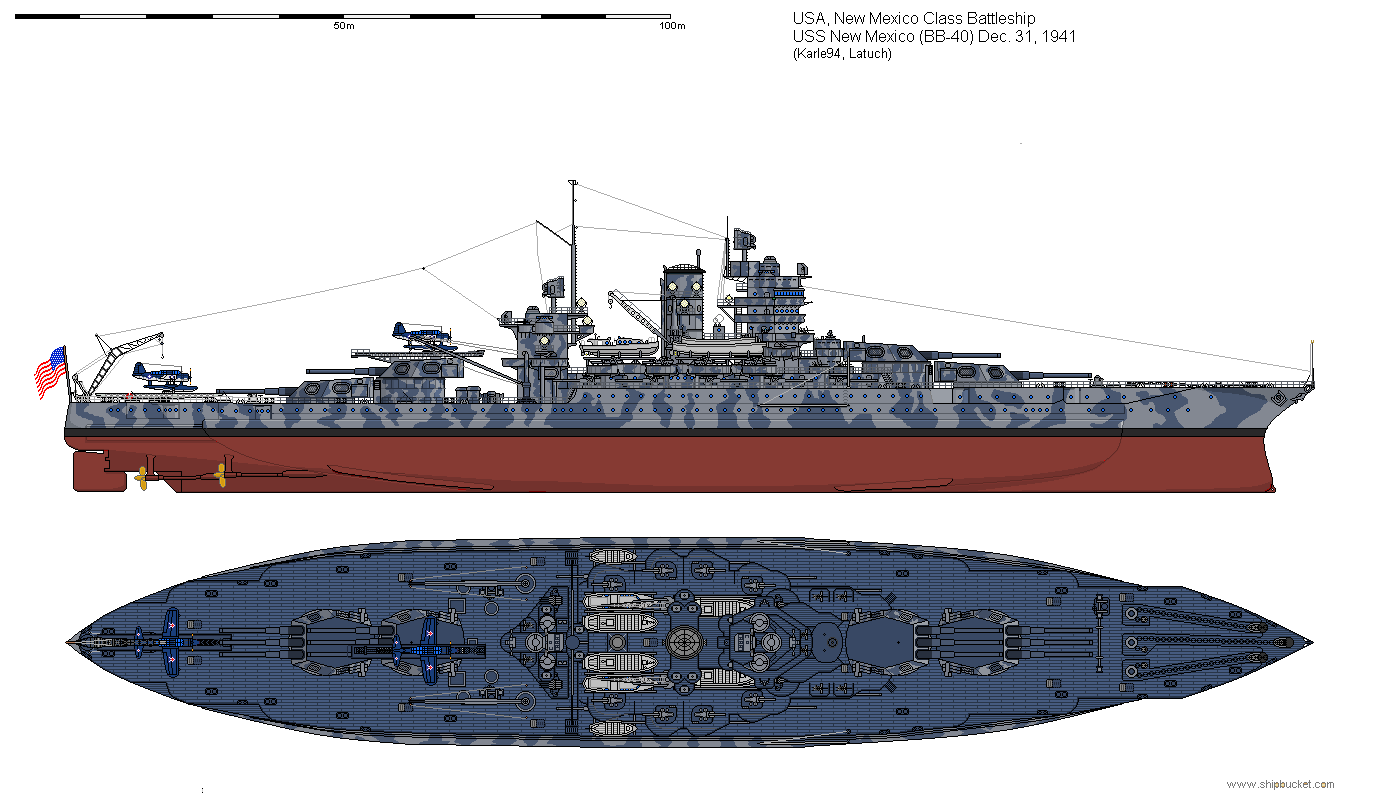
1941 view, as the ships were at the time of Pearl Harbour. All four ships of the class were in the Atlantic, reinforcing the Neutrality patrols. The ships were transferred to the Pacific Fleet and arrived there in early 1942, replacing the sunk and badly damaged battleships from the Pearl Harbour attack. During much of 1942 the ships patrolled and undertook convoy escort duties along the Pacific coast. The first time the ships got to fire their guns in anger at the Japanese was in early 1943 when the ships were the fire support group for the retaking of the Aleutian Islands. From then on the ships were part of the bombardment fleet that supported the US landings on islands throughout the Pacific.
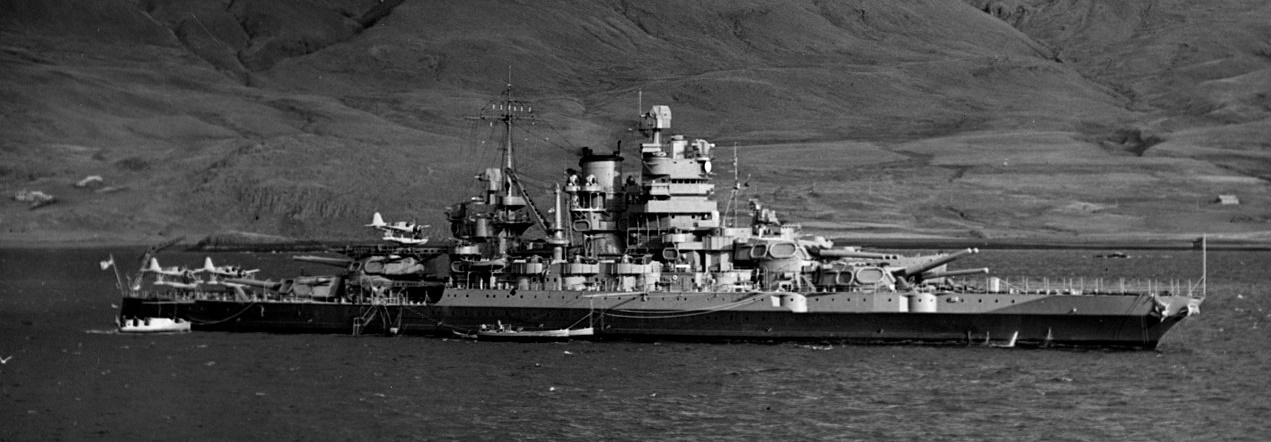
USS Idaho in the Atlantic Fleet 1941 on neutrality patrols.
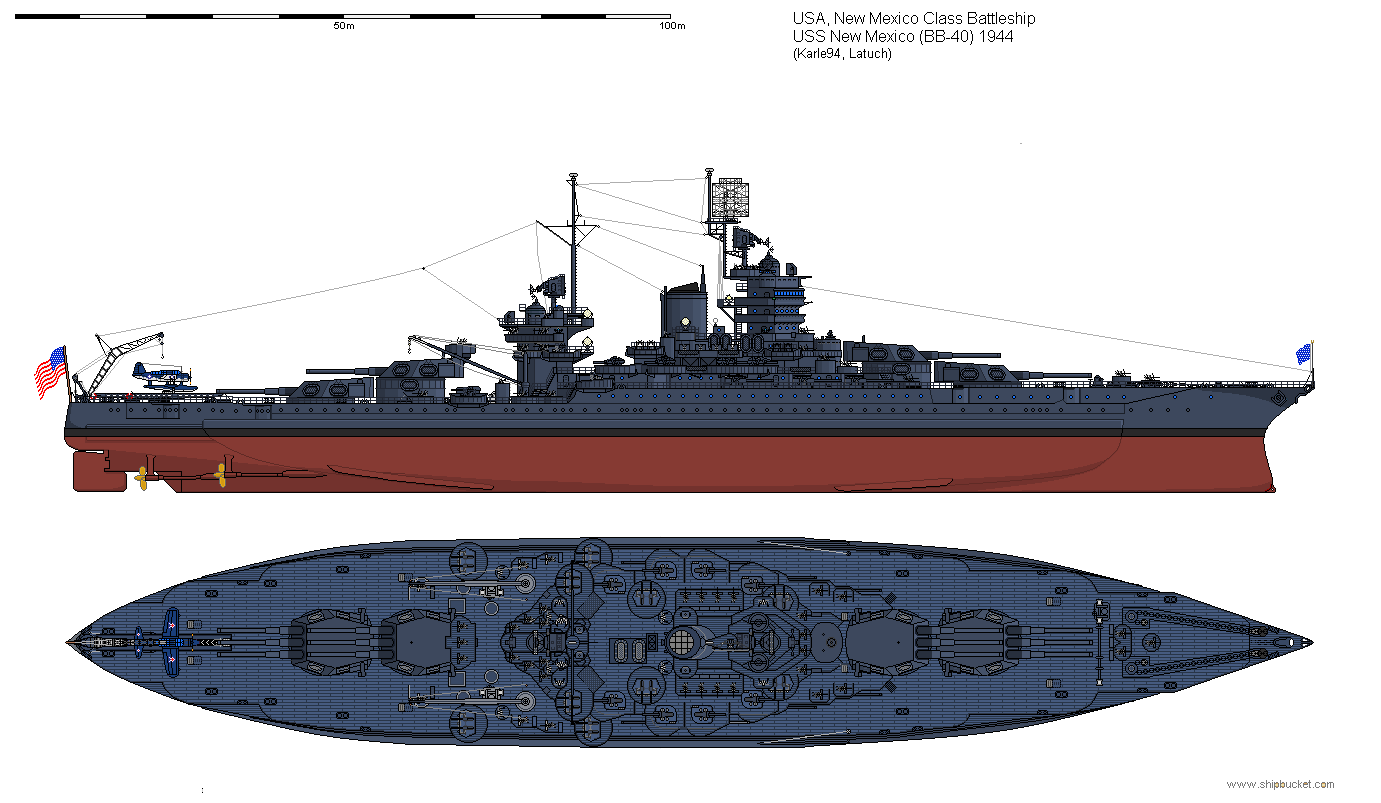
The 1944 drawing above, shows the additions of Radar and multiple smaller AA weaponry. But, unlike some of the other classes, these ships were not heavily modified with twin 5"/38cal guns and associated directors.
_underway.jpg)
